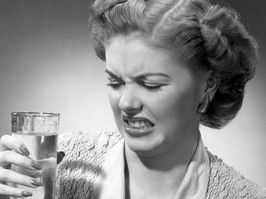“i use a flat iron all the time on my own hair and my clients,” tully says. “i definitely use it for multiple different things, not just to make it straight. i use it to make it wavy, to give it more of a beach wave, and i use it for a really strong bouncy curl that you can then brush out and turn into hollywood waves.”
it’s about the tools and the technique
the only caveat for tully to refuse the flat iron would be on hair that is extremely fragile from processing and bleaching. the health of your hair is one of her top concerns. she recommends using a quality iron where you can adjust the temperature, turning it down to protect hair if you have a finer texture. dyson, for example, has three heat settings – 330°f, 365°f and 410°f – to help people control the heat exposure.
another important tip is instead of doing multiple passes on your hair for flattening, aim for one single pass, says tully.
make sure your hair is completely dry before you iron and use slow, controlled movements in smaller sections.
“as you progress, you learn a little bit more about your hair and what it needs to become fully straight when you’re flat ironing it,” she says. “good technique definitely goes a long way.”
part of her pro technique is preparing your for the iron by blow-drying the hair smooth with a boar bristle brush or metal round brush before starting that first single pass.
 4 minute read
4 minute read









